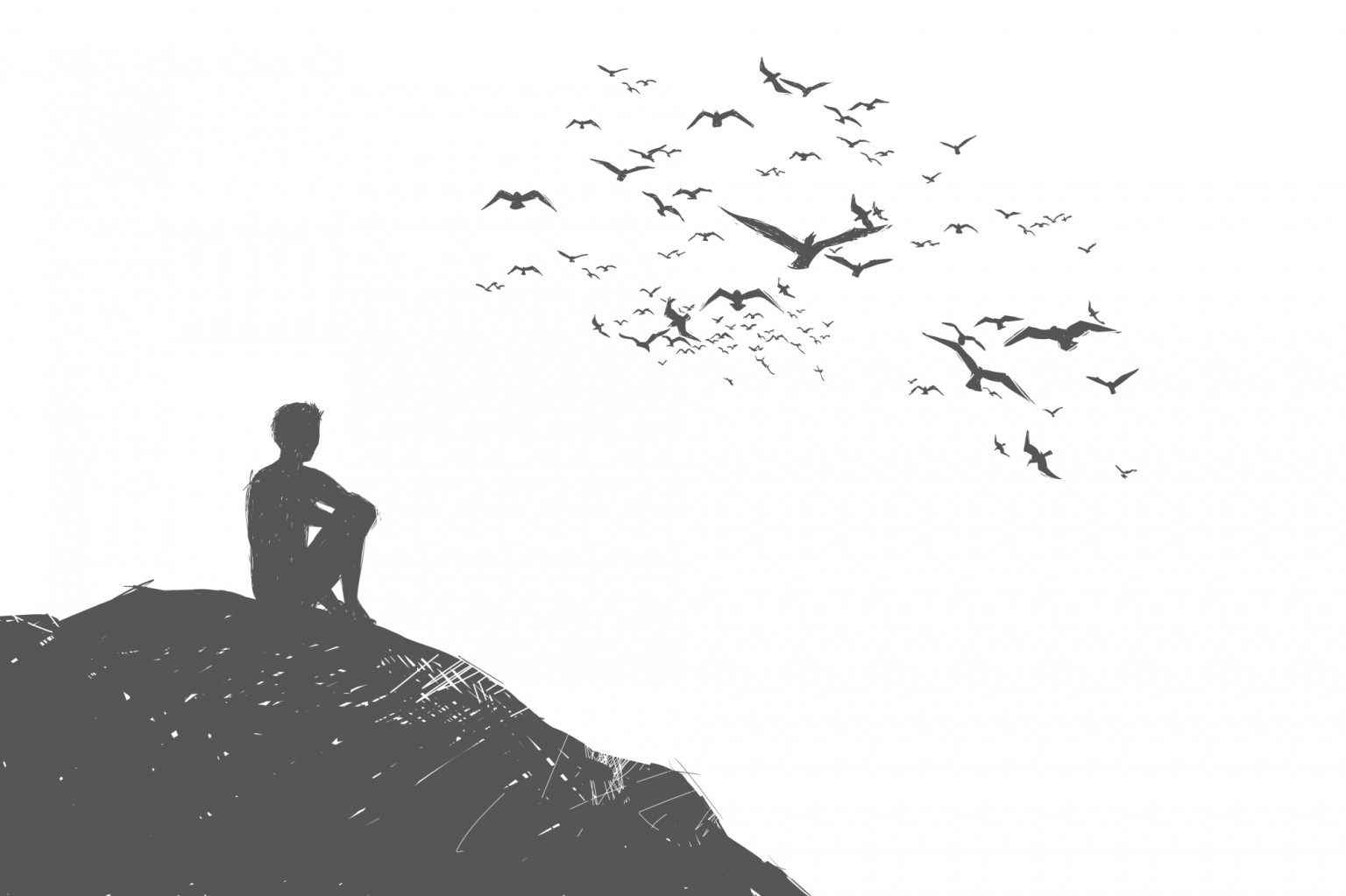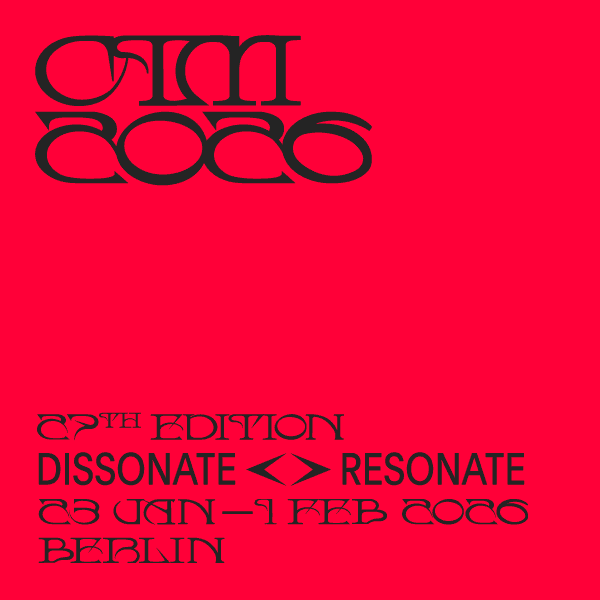
Nature won’t protect you anymore
A few years ago I indulged the fantasy that most interesting Nordic music written in the last nine decades was, to some extent, a reaction to Sibelius’s symphonic poem Tapiola (1926). In my mind, Sibelius’s score had come to embody the very essence of both an ending and a beginning; its ultimate tabula rasa, in a purifying B major, representing not just a semi-conscious prelude to the composer’s own three-decade silence but also a laying of the ground for a new aesthetic, one for the coming generations to define.
Technically and emotionally, Sibelius was far removed from archetype Romanticism. But his unerring belief that the miracle of nature could transform the agony of life into something better is a typically Nordic refraction of Romantic ideals. Tapiola suggests that Sibelius saw mankind’s interaction with the natural world in more complex terms. Mahler, who sought redemption in the unadulterated beauty of nature as his various faiths failed him, could never have dreamt-up Tapiola – music that communicates the terrifyingly precarious balance of a life lived among the trees, literally and figuratively.
Older generations lament what it is they loved and stand to lose; younger ones rage at the prospect of inheriting a planet bereft of beauty and fertility
That sort of balance has coloured life and art in the North for centuries. Little up here is so unequivocal as Mahler’s musical images of nature springing to man’s emotional rescue in glorious Technicolor. Even in Nielsen’s Fifth Symphony (1922), the rumblings of a pandemic are never quite silenced while the Darwinian undertones of his Sixth (1925) suggest, as much as in the Fourth (‘The Inextinguishable’, 1916), that only the spirited will survive. There’s little in Sibelius or Nielsen that tritely marks the passing of one season and the welcoming of another. Generally, the emphases are far more piercing than that.
Role reversal
And so we enter a new phase, one in which man’s place in the great wheel of life is suddenly not so secure and nature’s isn’t so reassuring. Could this be a development adumbrated by those two pivotal figures in Nordic creative history? What Mahler didn’t see coming was the paradigm shift of the twenty-first century, in which nature ceases to be the bosom we run to for comfort but rather, exhausted and overcome, becomes our greatest responsibility and our chief cause for concern. Never in the field of sophisticated artistic endeavour has the natural world provided humans with more multifaceted worry. Unsurprisingly, we are struggling coming to terms with what that means in practical terms. It probably means something more than offsetting the carbon every time you book a flight.
In music, a certain seam of neo-Romanticism has reflected this all along: Bent Sørensen’s suggestion that the most pure forms of beauty are already lost to the world or crumble even at the point of recognition; Hans Abrahamsen’s retreat into the domain of all our childhoods, where it still snows, where the story turns out good even if the good people don’t survive. Sørensen accepts the world as he sees it, albeit with a tear in his eye. Abrahamsen appears determined to present an escapist alternative if only as a means of emotional survival.
Sibelius’s Tapiola (1926), recorded by the Helsinki Philharmonic Orchestra and Leif Segerstam in 1996. © Ondine
The Norwegian composer Helge Iberg’s response to Das Lied von der Erde, Songs from the Planet of Life (2018), addresses Mahler’s ‘holistic kind of reassurance of nature’s harmony and the eternal return of life’ (Iberg’s liner notes) with the suggestion that such reassurance is no longer there. The nine songs that make up his concerto grosso are delicate landscapes of melancholy and vitality in which we sense a creeping unease; Iberg’s ear for the quasi-improvisatory means his music often slips with apparent inevitability over to the dark side, the yin-yang balance of major and minor fatally upset. Natural beauty is on hand to tease and tantalize, all the more tragic for its temporality. We’re hearing a version of Mahler’s nostalgia, devastatingly undercut by scientific realism but determined to revel in its own beauty all the same.
Crudely speaking, we can divide the mutually negative feelings induced by climate change into generational silos. It’s a pattern that extends from life into music: older generations lament what it is they loved and stand to lose; younger ones rage at the prospect of inheriting a planet bereft of beauty and fertility. As 65-year-old Iberg’s is the music of sadness, 46-year-old Maja Ratkje’s is that of anger, created in the same Norway but one where, in Ratkje’s eyes, the villains of the piece are going about their business in full view.
In 2009, the composer perched the world’s loudest speaker system on the side of a mountain overlooking a salmon fjord that was, according to a scheme by Nordic Mining, earmarked for the gift of ‘200 million cubic meters of contaminated waste (…) every year’ (Ratkje’s own description) courtesy of a startup mining project nearby. The trombone-based sounds her entertainingly large horns emitted (reaching a less-than-subtle 130 decibels) were ‘composed’ and far from devoid of analytical interest. But their fundamental purpose was more basic: a call-to-arms.
The dark side of the natural majesty implied by Tapiola is now more fully, more permanently on view
For all the alarm, Ratkje’s Desibel was an artistic statement characterized by pro-activity and lined with positivity as a result; something can be done, in this micro-situation at least, Ratkje insisted. The bad news channeled by Tapiola is that, at a macro level, events are well beyond mankind’s control even if we were complicit in the sewing of the seeds that brought them about. In that final crepuscular B major, the forest of Tapiola becomes the fur coat of Finno-Ugric proverb. The technical miracle of Sibelius’s music is that he apparently places its unfurling energy beyond his own or any human control; it rolls out of itself according to its own natural rules. Tapiola only comes good, in a major key, because the winds die down. The great illusion Sibelius conjures is that he’s just as relieved by the turn of events as we are.
In his own first symphony (1955), Per Nørgård quotes Tapiola as if to signal his intent to work to similar ends – the creation of symphonies that will spool outwards to rules established by the composer but kinetically beyond his control. The rest is history: the Aarhus School of the late twentieth-century, Poul Ruders’s ‘Change Ringing’, Karsten Fundal’s ‘Feedback System’, and so on – the potentially dangerous science of nature fuelling scores rather than its aesthetics decorating them. But for all their structural potential, those series and devices were also useful as a means of materialistic distillation – the sort Sibelius achieved by going the long way round, kneading his material until it hardly existed (but could still sustain a 20-minute orchestral fantasy pregnant with implication).
The dark side of the natural majesty implied by Tapiola is now more fully, more permanently on view. And you wouldn’t have betted against the Icelanders having the gumption to foreground it in music first. That’s a logical development for a country whose music has always tended to riff on the precarious tectonics, fearsome darkness and apocalyptic atmosphere of the topography in which it is rooted. Hearing 30-year-old Bára Gísladóttir’s Víddir (2020) last month, I wrote here on Seismograf of its likeness to a treeless Tapiola, blasted by forceful winds unbroken by plant-life. With its clear depiction of an existential threat – animals howling in pain, the creeping desolation of mass extinction – Víddir was less the music of catharsis or even protest and more a prophecy of a done deal; the blackest of black mirrors.
Realism or Romanticism?
But Gísladóttir’s timing, however insistent her foretelling of events, is rooted in the here-and-now and thus filters her music through our own imagining of developments we can’t know, for certain, will come to pass. Fitting the generational stereotype to a degree – he’s bang halfway between the kids and the seniors – 42-year-old Niels Rønsholdt takes a circuitous view of mass extinction in his Archive of Emotions and Experiences (2019), which looks beyond the horizon to a time when the world has been purged of life as we know it. In the work’s Book 1, an oracle-pianist channels ideas of what the previous ecosystem’s creatures known as ‘birds’ might have sounded like. When life as we know it has stopped and a new life form has emerged, it could well be tatty old scores to Tapiola and the like that help Earth’s new inhabitants imagine what noises these ‘birds’ actually made (it was a bird call motif from Tapiola that Nørgård quoted in his first symphony). For Rønsholdt, art will outlive mankind.
Archive of Emotions and Experiences forms a fascinating opening sequel to so much music already written by Bent Sørensen. It follows that composer’s fading photographs and memories with a piercing attempt to imagine something never known. The score is acute rather than oblique, projecting out in fits and spurts, suggesting an imagination working overtime but with focus, sometimes hitting the bulls-eye (‘yes, that’s what the previous world’s birds sounded like!’) and sometimes bringing us the sense of another world, distantly but surely related to our own.
Rehearsal recording of part one of Niels Rønsholdt’s Archive of Emtions and Experiences, premiered by Lenio Liatsou at Klang Festival 2019. © Niels Rønsholdt
Contemporary Nordic nature music – which often isn’t advertised thus and is just as often only conceived subconsciously as such – can be called so more because of the way it treats its material with scientific methods than for its depiction of sunsets and meadows. Esa-Pekka Salonen’s orchestral piece Helix (2005) fuses out because the science in which it’s rooted can no longer sustain the music, which is the joy of the work’s upward spiral and scintillating ending.
Nordic composers have used science to expand their colour palates (Anna Thorvaldsdóttir), to force their music’s momentum by means of rhythmic manipulation or ragging à la Sibelius (Svend Hvidtfelt Nielsen, Seppo Pohjola) and have even used the process of cell transfer in fungi to specifically map a work’s progress (Lil Lacy). We could file those methods under ‘Nordic functionalism’ – nature’s insistence on structural integrity. In that sense, the examples cited aren’t so different from those set by Nielsen’s Helios Overture (1903) and more recently Outi Tarkiainen’s Midnight Sun Variations for orchestra (2019) – both scores which could be said to romanticize their subjects, if they didn’t tap into the processes of the science that inspired them with such realism and rigour.
Tarkiainen has lived by turns in Rovaniemi in Lapland and more recently in Ivalo, a remote Finnish village over 200 kilometres inside the Arctic Circle. It’s easier to come to terms with nature’s miraculous beauty when you’re at the sharp end of its steady erosion. In her score, Tarkiainen focuses on the infinitely nuanced colours that bathe the skies and forests of the far north at night; we’re in the spectralist domain of notes as colour, massed clusters and scales metamorphosing kaleidoscopically as the tinted night light gives way to the white, misty light of dawn. There’s something in the act of harbouring that experience for creative ends that suggests the composer knows it’s precarious, not least in her conscious reference to the ‘the summer’s last warm day’ in a programme note. There is a sense of foreboding in Midnight Sun Variations, just as there is in Tapiola, which is also referenced in that programme note.
Maybe, then, the flipside of Bára Gísladóttir’s railing, heaving prophecy is a keenness to hear what remains left to be heard
Down here in Denmark, our less extreme surroundings remind us that we live in a literal age, one whose insistence that an action delivers an outcome can form a glimmer of optimism in the face of a potentially catastrophic change to the natural order, and will be set even more deeply in our consciousness when we stagger from the coronavirus quarantine and begin to rethink our relationship with science and nature once more.
Either way, the compositional tendency to look at the natural world with scientific, microscopic eyes might future-proof a generation of composers who face a world in which the aesthetics of nature won’t be available as sources of inspiration anyway. Most of us didn’t see any snow this winter and the anemones began to blossom in the first week of February. Any Romantic notions of longing for spring or of the joyous shaking off of winter have been nullified by the conjoining of seven months into a single stretch of greyness saturated by rain – and the fact that when it finally lifted, we weren’t allowed out for four weeks (and counting) anyway. ‘For the time being,’ wrote Bjørn Bredal in Politiken on 7 March, well before the lockdown, ‘our relationship with nature is not so romantic’. Sibelius and Nielsen saw it coming.
Back to silence
And we might not have to wait for the post-apocalyptic domain imagined by Niels Rønsholdt before feeling the need to conjure-up images of lost species. As beasts and birds check-out of Earth’s ecosystem with increasing frequency, their songs lost forever, we could well find ourselves in the grip of a steady biological diminuendo.
Sibelius surely didn’t mean to silence nature, to put it to sleep once and for all, in the steady crepuscular disappearance of Tapiola’s final bars. But the game that score plays with silence is a provocative one nonetheless. The composer had explored the eloquence and energy of silence in plenty of works before; in some he had used it even more extensively and brazenly (Symphony No. 4, most obviously). But in Tapiola, silence is the natural state from which the music is awoken with a discourteous rumble, and to which it will eventually return. Silence isn’t used as rhythmic lubricant nor as dramatic device pitched in counterpoint to extreme noise. It lies under the score’s each and every note.

